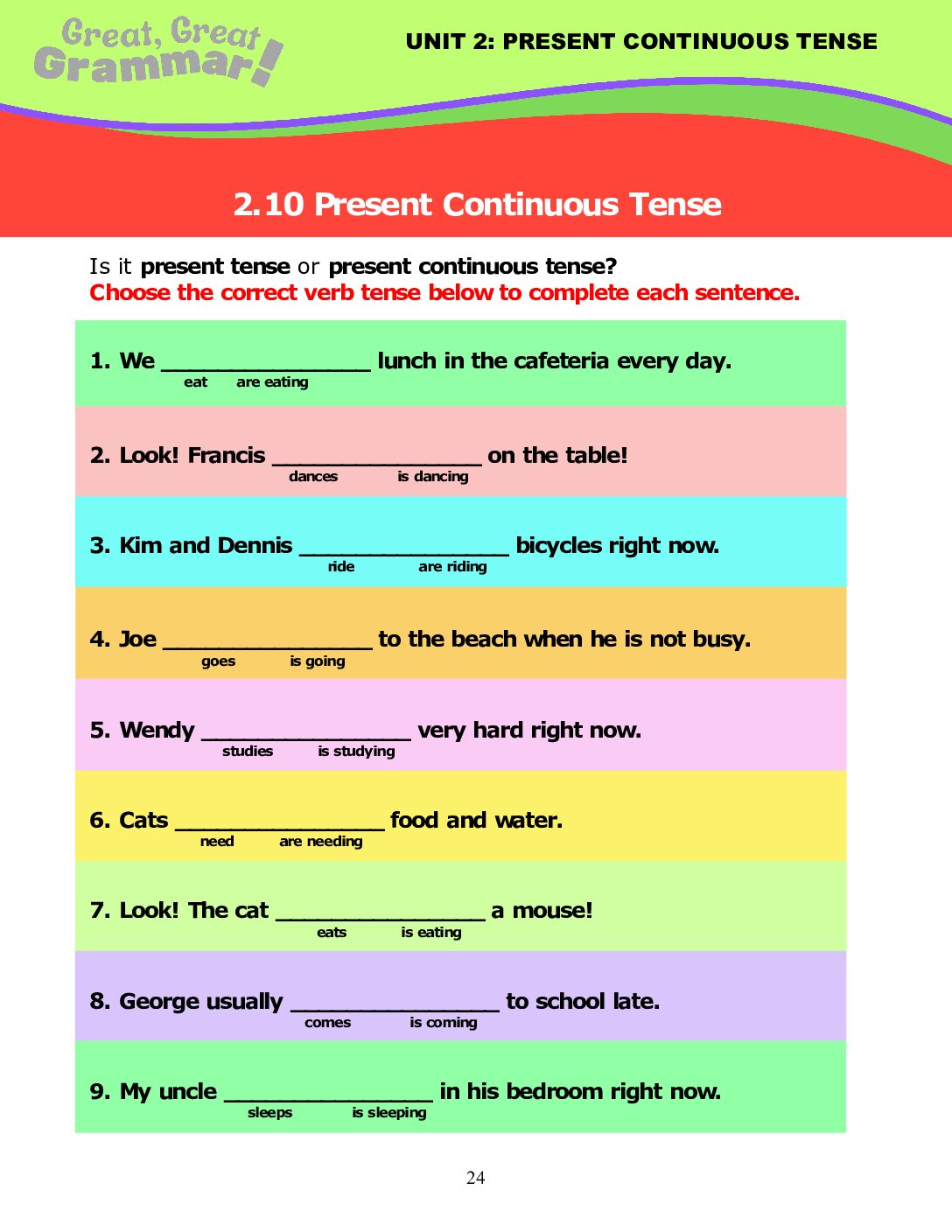In this ESL grammar lesson, students choose from two verb forms (present tense or present continuous tense) to complete various sentences. Students must pay attention to the context of the sentences to decide which tense to use.
ESL Grammar: Key Differences Between Present Tense and Present Continuous Tense
- Usage:
- Present Tense: Describes habitual actions, general truths, or repeated occurrences.
- Example: She teaches English.
- Present Continuous Tense: Describes actions happening right now or temporary situations.
- Example: She is teaching English at the moment.
- Present Tense: Describes habitual actions, general truths, or repeated occurrences.
- Formation:
- Present Tense: Uses the base form of the verb with “-s” or “-es” for third person singular.
- Example: He plays soccer.
- Present Continuous Tense: Uses the verb “to be” (am, is, are) + base verb + “-ing”.
- Example: He is playing soccer.
- Present Tense: Uses the base form of the verb with “-s” or “-es” for third person singular.
- Time Reference:
- Present Tense: Refers to general time frames or habitual actions.
- Example: They visit their grandparents every summer.
- Present Continuous Tense: Refers to actions occurring right now or temporary situations.
- Example: They are visiting their grandparents this summer.
- Present Tense: Refers to general time frames or habitual actions.
The English grammar lesson below compares the present tense and the present continuous tense. Students choose the correct form of the verbs according to the context of the sentences. Our series of ESL grammar lessons on subjects and verbs introduce these concepts and reinforce them through helpful and instructive exercises.
This lesson is available for free download, and you can download many more English grammar lessons focusing on basic English tenses (present tense, present continuous tense, past tense, future tense) in our comprehensive, beginner-level ESL grammar textbook Great, Great Grammar! (Book 2: Tenses).

